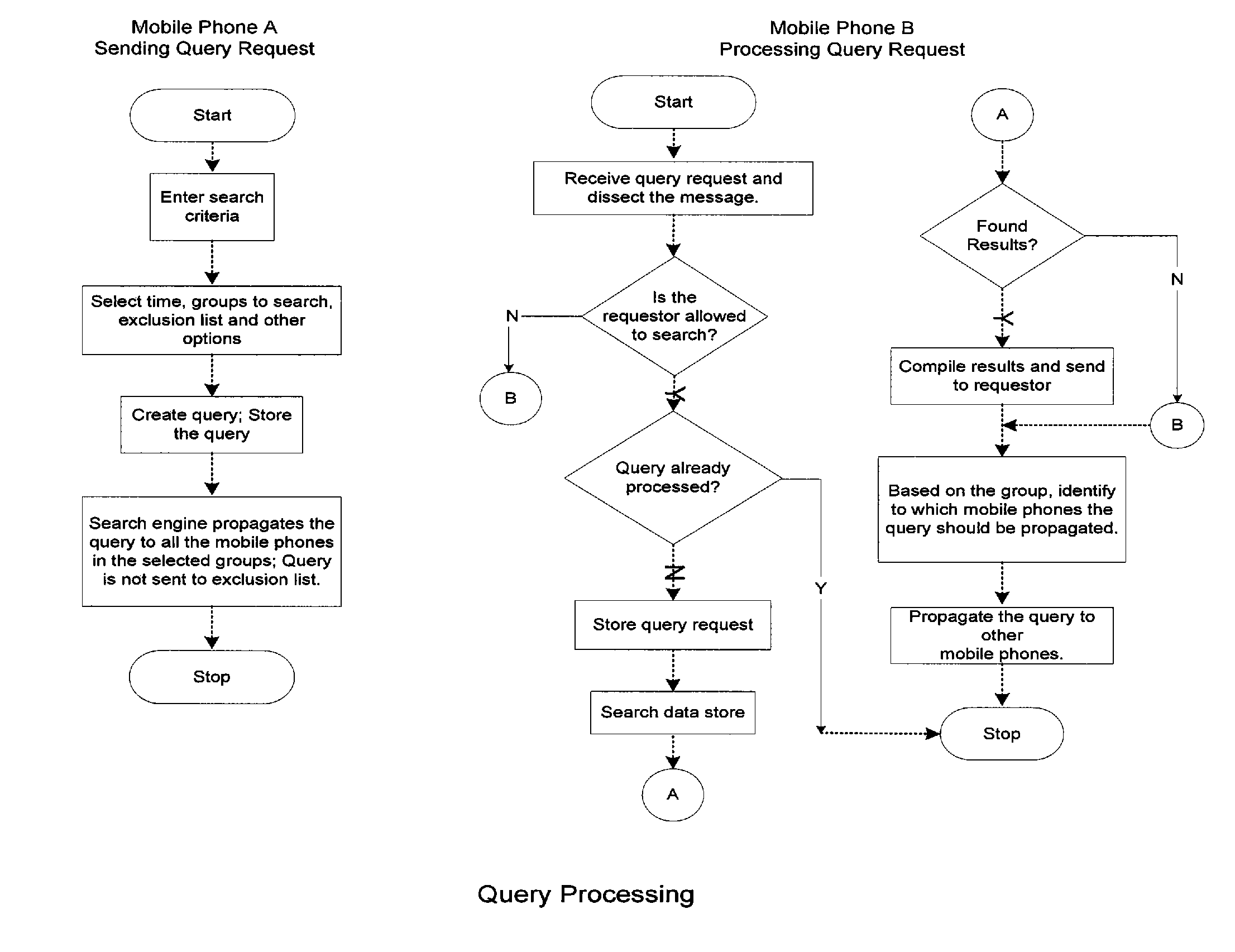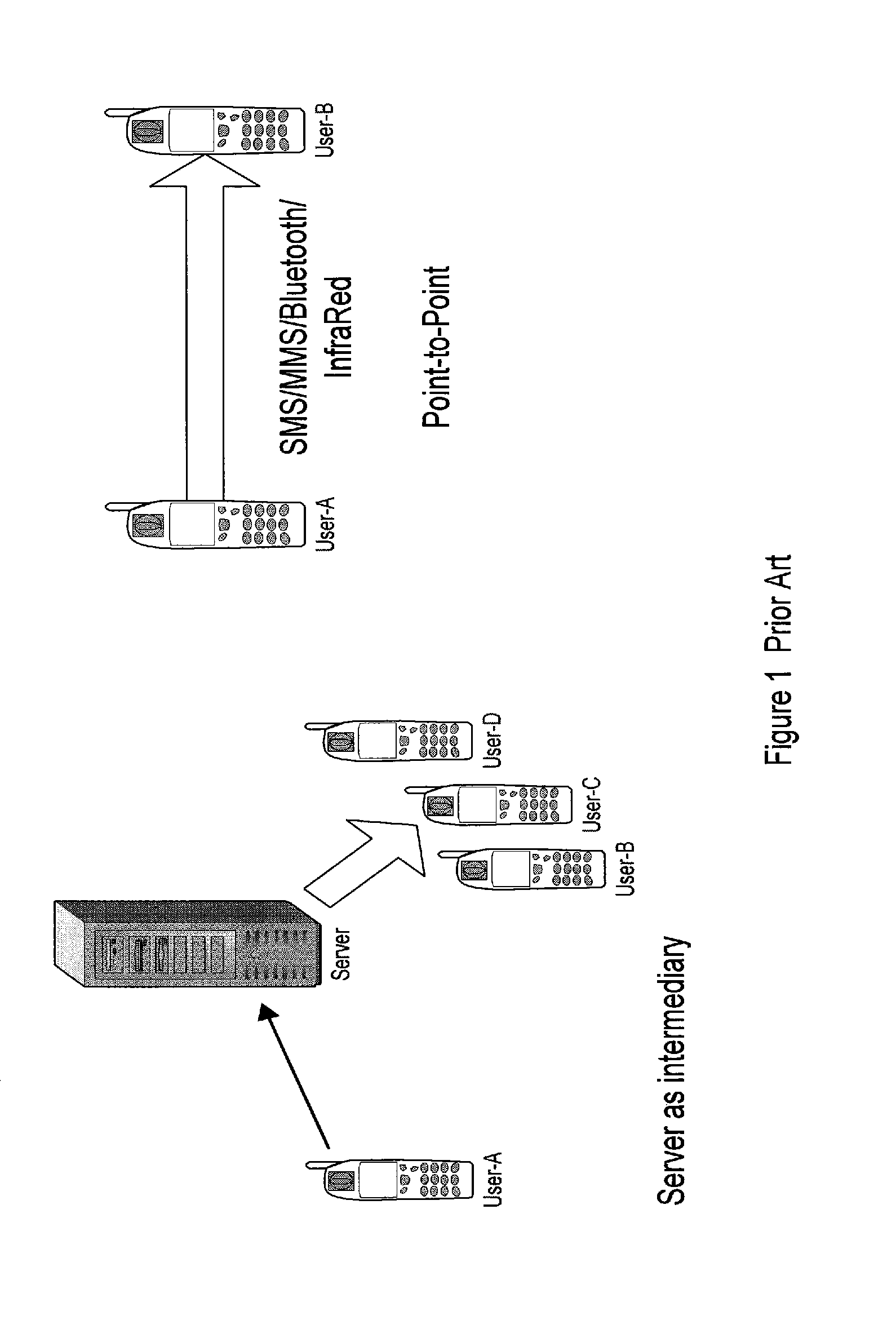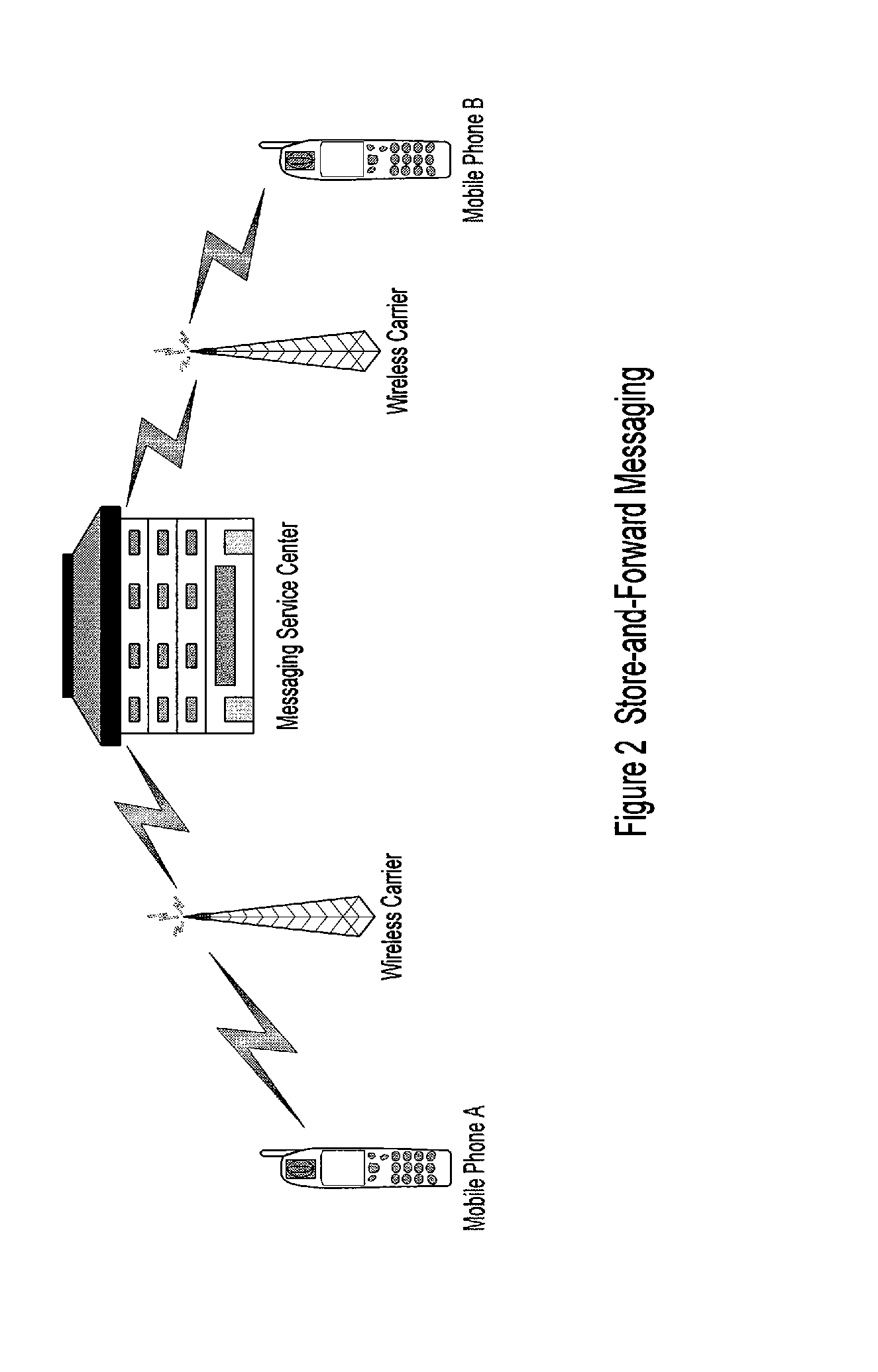Information Exchange Among Members of a Group of Communication Device Users
a communication device and user technology, applied in the field of information exchange among members of a group of communication device users, can solve the problems of inability to discover, inability to date or out of sync, and inability to promote habitual us
- Summary
- Abstract
- Description
- Claims
- Application Information
AI Technical Summary
Benefits of technology
Problems solved by technology
Method used
Image
Examples
Embodiment Construction
[0052]Referring now to the drawings, the preferred and alternate embodiments of the present invention will be described. As discussed in more detail herein, the invention comprises a method, system, and apparatus for controlling transmission and reception of communications between a plurality of devices in a group to allow searching of stored resources on the devices, including group management and a search engine, thereby allowing searching without relying on a centralized server or physical network or wireless network for storing resources.
[0053]The invention focuses on distributed search technology for mobile phones which enables users to discover and share published information among a group of mobile phones without connecting to a network and / or without storing information on a server or intermediary. The search technology may be based on asynchronous store-and-forward messaging techniques, or similar techniques.
[0054]Specifically, the invention comprises a personalized search ...
PUM
 Login to View More
Login to View More Abstract
Description
Claims
Application Information
 Login to View More
Login to View More - R&D
- Intellectual Property
- Life Sciences
- Materials
- Tech Scout
- Unparalleled Data Quality
- Higher Quality Content
- 60% Fewer Hallucinations
Browse by: Latest US Patents, China's latest patents, Technical Efficacy Thesaurus, Application Domain, Technology Topic, Popular Technical Reports.
© 2025 PatSnap. All rights reserved.Legal|Privacy policy|Modern Slavery Act Transparency Statement|Sitemap|About US| Contact US: help@patsnap.com



